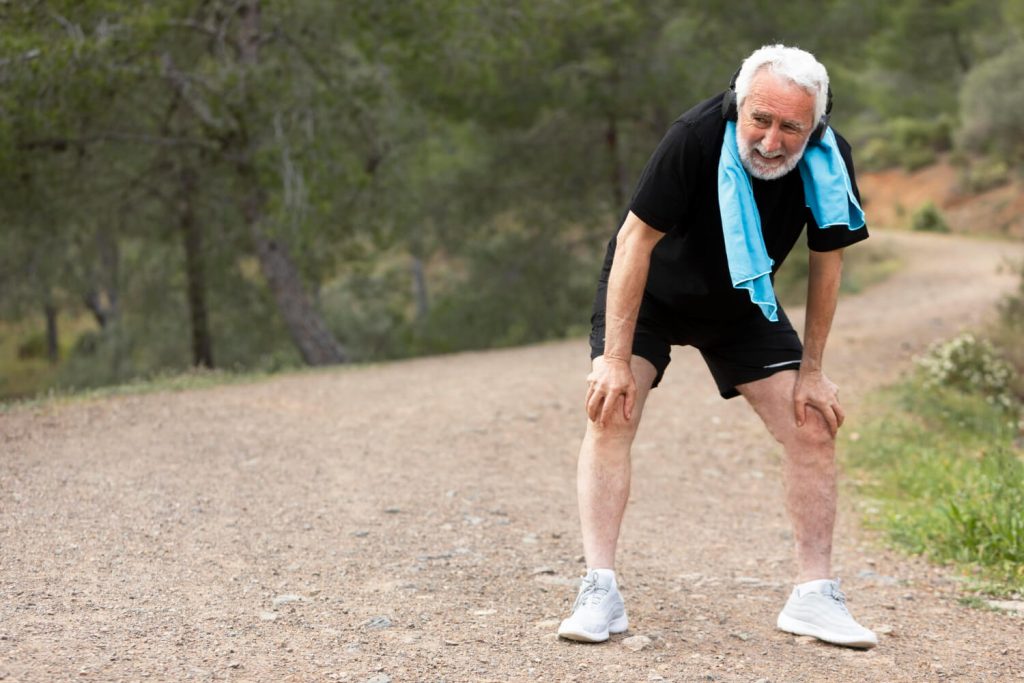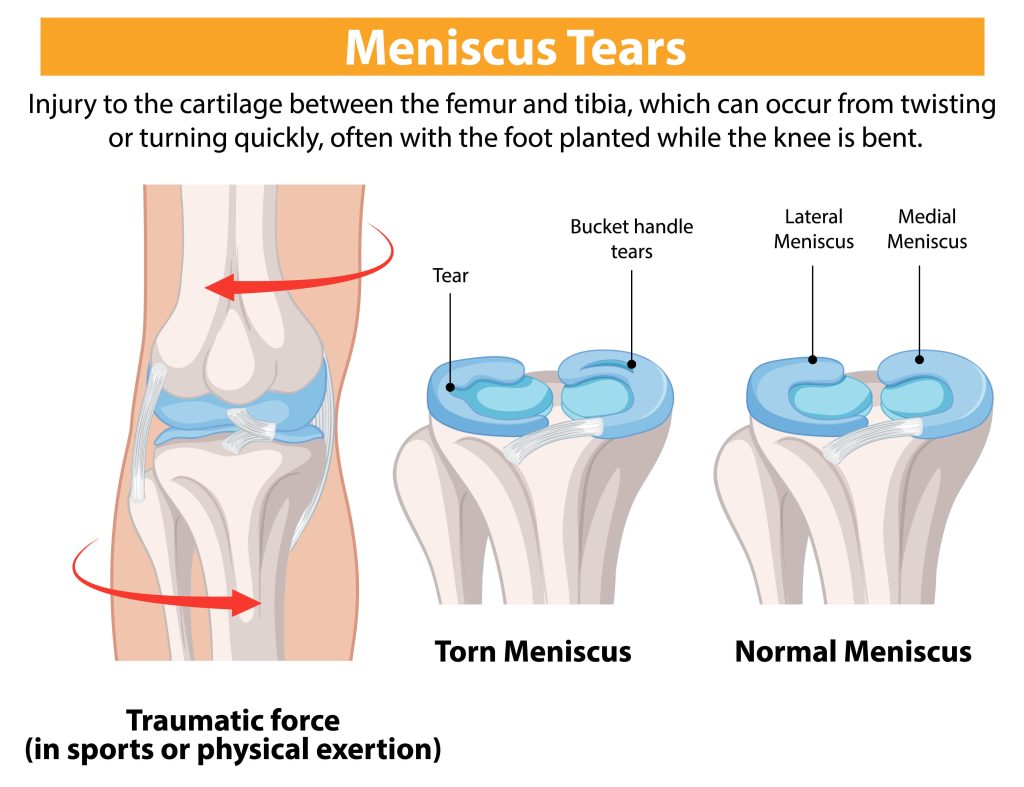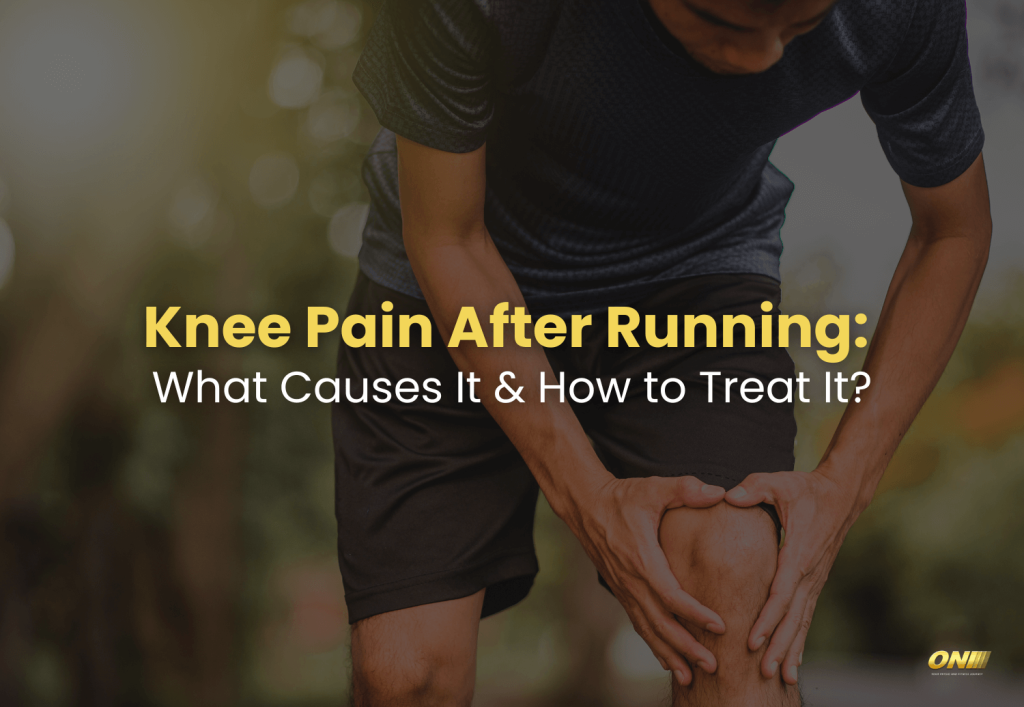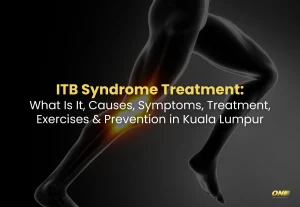Introduction
Running is a fantastic way to stay active and healthy, but for many runners, knee pain can be an unwelcome and persistent issue. Experiencing knee pain after running or even during runs is common among both beginners and seasoned athletes. This discomfort can range from mild aches to debilitating pain, impacting performance and everyday movement.
At ONI Physio Fitness in Mont Kiara, Kuala Lumpur, we specialize in diagnosing and treating running-related knee pain. This post will explore common causes, treatment options, effective exercises, and prevention tips to keep you running pain-free.
Possible Causes of Knee Pain After Running

Several conditions can cause knee pain when running, each with distinct symptoms and causes. Understanding these can help pinpoint the source of your pain and lead to better treatment outcomes
Iliotibial Band (ITB) Syndrome
ITB syndrome is caused by irritation of the iliotibial band, a ligament running along the outside of the thigh from the hip to the knee. This condition typically results in pain on the outer side of the knee, particularly after long runs or repetitive activities.
Patellofemoral Pain Syndrome
Often referred to as “runner’s knee,” patellofemoral pain syndrome causes pain around or behind the kneecap. It is often due to poor knee alignment or imbalances in the surrounding muscles, resulting in increased pressure on the knee joint when running.
Patellar Tendonitis (Jumper’s Knee)
Patellar tendonitis, or “jumper’s knee,” is caused by inflammation of the patellar tendon, which connects the kneecap to the shinbone. This condition causes pain just below the kneecap and is common in runners due to repetitive stress.
Meniscus Tear

A meniscus tear can occur from twisting or turning the knee suddenly. This injury can cause pain, swelling, and stiffness, especially during weight-bearing activities like running. It’s often more common in runners with a history of knee injury or excessive strain.
Bursitis
Bursitis in the knee involves inflammation of the bursae, small fluid-filled sacs that cushion the knee joint. Repetitive knee bending, running on hard surfaces, or overuse can lead to bursitis, causing pain and swelling around the knee.
Diagnosis
Correctly diagnosing the cause of knee pain is essential for effective treatment.
At ONI Physio Fitness in Mont Kiara, our physiotherapists conduct a thorough assessment to determine the exact condition causing your pain. This assessment includes a review of your running history, physical examination, and movement tests to identify areas of weakness or misalignment.
Accurate diagnosis allows us to create a targeted treatment plan that addresses the specific source of your pain and promotes optimal recovery.
How to Treat Running-Related Knee Pain?
Treating knee pain after running usually involves a combination of rest, physiotherapy, strengthening exercises, and, in some cases, medical intervention. Here are some effective treatments:
- Physiotherapy: Our physiotherapists provide hands-on techniques, such as soft tissue mobilization, manual therapy, and guided stretching, to reduce pain and improve knee mobility. We also design specific strengthening exercises to support knee stability and correct muscle imbalances.
- Rest and Activity Modification: Reducing running intensity or taking breaks can help alleviate stress on the knee, giving it time to heal.
- Orthotics and Supportive Footwear: Correcting alignment issues with orthotic support and wearing proper running shoes can prevent excessive knee strain.
- Cold Therapy: Applying ice after running helps reduce inflammation and relieve knee pain.
- Stretching and Strengthening: Targeted stretching and strengthening exercises are crucial for improving muscle balance and relieving pressure on the knee.
Exercises for Running-Related Knee Pain
Incorporating specific exercises can help relieve knee pain and strengthen the muscles around the knee. Here’s one exercise for each of the common causes of knee pain:
Side-Lying Leg Raises
- Lie on your side with legs straight and one leg stacked on top of the other.
- Lift the top leg upwards to about 45 degrees while keeping it straight.
- Lower slowly and repeat 15 times on each side.
- This exercise strengthens the hip abductor muscles, which can help relieve pressure on the IT band.
Clamshell Exercise
- Lie on your side with knees bent at a 90-degree angle and your feet together.
- Lift the top knee upwards, keeping your feet together, and hold briefly.
- Slowly lower the knee back down. Repeat 15 times on each side.
- Clamshells help strengthen the hip muscles, supporting proper knee alignment and reducing pressure on the kneecap.
Eccentric Squats
- Stand on a raised platform with one leg on the platform and the other leg hanging off.
- Slowly squat down by bending the knee of the supporting leg.
- Return to the starting position and repeat 10-15 times.
- This exercise targets the patellar tendon, promoting controlled tendon strengthening.
Step-Ups
- Stand in front of a low step or platform, placing one foot on the step.
- Push through the leg on the step to lift your body, keeping your knee aligned.
- Step back down and repeat 10-15 times on each leg.
- Step-ups strengthen the quadriceps and glutes, supporting knee stability during movement.
Quadriceps Stretch
- Stand with one hand against a wall for support.
- Pull one foot towards your glutes, bending the knee and holding your ankle.
- Hold for 20-30 seconds and switch to the other leg.
- This stretch relieves tension in the quadriceps, reducing pressure on the knee joint.
How to Prevent Knee Pain After Running?
Prevention is key to maintaining healthy knees. Here are a few tips to reduce the risk of knee pain when running:
- Warm up and cool down properly: Prepare your muscles for running and aid recovery with a proper warm-up and cool-down routine.
- Strengthen and stretch your leg muscles: A strong and balanced lower body helps support the knee and reduce strain.
- Wear the right footwear: Invest in supportive running shoes that suit your foot type and provide adequate cushioning.
- Avoid running on hard surfaces: Opt for softer trails or grass to reduce impact on your knees.
- Gradually increase running intensity: Avoid sudden increases in mileage or intensity to give your body time to adapt.
Visit ONI Physio Fitness for Knee Pain Assessment & Treatment
If knee pain is holding you back from running or affecting your everyday activities, don’t wait to seek help. At ONI Physio Fitness in Mont Kiara, Kuala Lumpur, our team of experienced physiotherapists is here to assess your condition and provide a personalized treatment plan to get you back to running pain-free.
Book your assessment today and take the first step toward pain-free running!
















